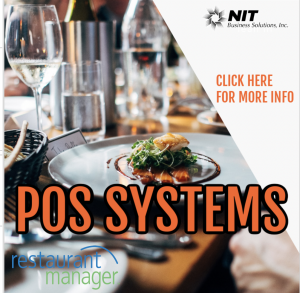
Those familiar with the restaurant industry understand that it is one without significantly high profit margins. In fact, the average profit margin of those in the industry has fallen to between 2 and 6 percent. What many regards as a 10 percent industry has seen recent trends lowering those margins even further. These lower margins are a big reason why so many restaurants close within their first three years of operation. In this article, we will analyze why these industry margins are not sustainable while giving some tips on how to raise these numbers.
Why are margins so low?
First, as with any business owner, we must dissect and attempt to comprehend why restaurant margins are so low. Restaurants have historically been a low margin industry due to high operating costs. Between employee wages, electrical and water bills, food costs, supplies, equipment maintenance , rent and everything in between, it is expensive to own and operate a restaurant. Once all of these costs are factored in, owners are left with minimal gains and often time losses. Relying upon a 10 percent profit margin is not a sustainable business model going forward. As food prices continue to climb along with other bills, restaurant owners should begin looking at ways to grow margins to combat rising costs.
Besides rising costs of food, another key sector to keep an eye on moving forward that will continue to affect your restaurant is the minimum wage. Just in San Diego alone, the minimum wage has been steadily increasing each year. As of 2020, it is up $4 from 2015. As these wages continue to climb, your business must adapt accordingly. A main reason so many restaurants close within a three year time frame is because they are unaware of the heavy costs that come with running a fully operating restaurant. Be aware of rising costs that directly affect your operations.
In addition, as the world continues transferring towards a digital and modern era, it is good to stay on top of delivery fees. Although this may not be the most favorable method, as we delved into here, it is good to be aware of fees that accrue from using a third party deliver service. These services often charge hefty fees that will take a big bite out your margins.
To run a successful business, you must keep a close eye on profit margins at all times. Operating at loss or anywhere less than 10 percent profit increases the likeliness of your business failing. There are many key indicators if your restaurant is succeeding or not, but many would argue in favor that the overall net profit margin is the most important.
How To Increase Margins
Now that we’ve established the importance of profit margins and where many businesses stumble, there are a few key simple ways to improve these numbers internally. Here’s a look at how price increases and using data can improve and even increase margins to a more sustainable level.
Menu Price Increases
First, restaurants should consider raising prices. If you are seeing margins anywhere below 10 percent, this is a good sign that you are offering your items at an unsustainable price. While there are many ways to save money and cut costs, raising prices is one of the few ways that will directly increase revenues. Price increases are not the most popular option, however they are necessary as operating costs continue to increase, shrinking your net margins. As much as you may want to price yourself favorably, be weary of pricing yourself out of business as lower prices can come with irreparable short and long term financial damage.
If food prices and employee wages continue to climb and your menu prices remain steady, this obviously sets your company up for lower gains. Take a step back and analyze if your menu prices reflect recent hikes in prices. Improving your margins can be as simple as raising prices to reflect recent economic trends.
Use Data to Your Advantage
One of the benefits of living in a modern world driven by tech is the data collected on a POS System can be used to improve the efficiency of your restaurant. A POS System can improve daily operations to cut costs, analyze sales, and make necessary inventory adjustments. As many restaurants continue to hover around the 10 percent margin, implementing a POS system into your business is a great way to organize, collect, and analyze cost saving data.
Many restaurants are using a POS System to keep track of necessary data, allowing managers and owners to look into anything that may need adjustment. A POS system’s advanced tracking and data collection functions can notify users when a certain product is near replacement levels, what items are selling the most, and what is not moving.
In addition, state of the art POS systems such as Restaurant Manger can generate reports that will track your best and worst sellers, see example here.

A smart way to raise prices is by raising your top 20 best sellers or even better your top 20 items with the highest profit margin. It’s much more subtle than raising prices across the board while also ensuring the increase in revenue. Restauranteurs should keep track of each menu item’s profit margin religiously. Just because an item is selling well does not mean it’s making the most profit. Sometime if an item is selling really well it might not translate as the highest money maker, it could actually be priced too low and customers are taking advantage of the friendly price.
Conclusion
As costs of operating restaurants continue to rise, owners must look into ways to extend upon the 10 percent margin standard. As these expenses continue to rise, we are seeing these margins shrink closer to 6-8 percent threshold, and owners must act proactively to prevent slim margins from going any lower. There are a few simple ways to combat these changes, such as raising individual prices or using a POS System to the fullest of its capabilities. For more information and help in the restaurant industry, feel free to click here.


